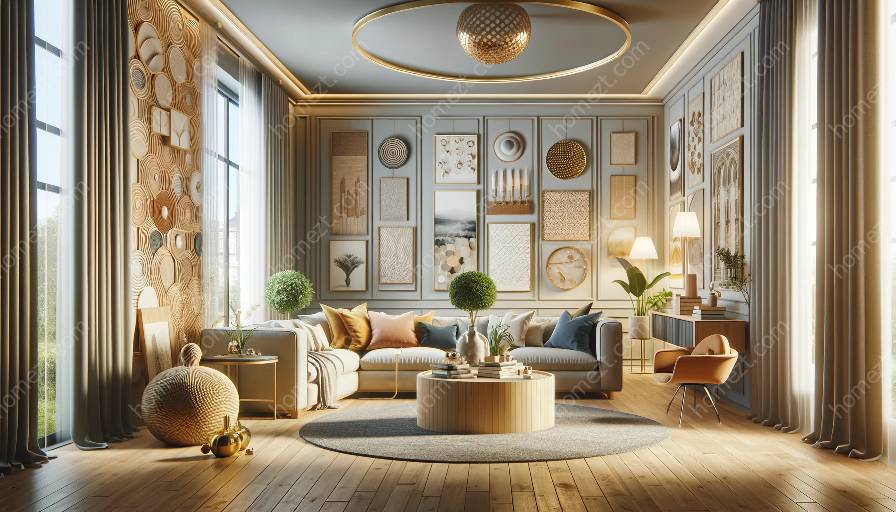Historic architectural features provide a unique and timeless charm to buildings, connecting us to the past while enriching our present. As we seek to preserve these elements, wall coverings and paint techniques offer versatile and complementary approaches that respect the historical value of the architecture while allowing for modern design considerations. In this article, we will explore the intersection of historic preservation, wall coverings, paint techniques, and their seamless integration into interior design and styling.
Understanding Historic Architectural Features
Before delving into how wall coverings and paint techniques can best preserve and complement historic architectural elements, it's essential to understand what makes these features significant. Historic architecture reflects the cultural, social, and artistic values of a particular era, often encompassing a unique blend of materials, craftsmanship, and design principles.
Delicate ornamental moldings, intricate woodwork, timeless masonry, and iconic facades are some of the defining features that contribute to the character and identity of historic buildings. These elements carry the stories of generations, shaping the urban landscape and providing a tangible link to our collective history.
Preservation and Complementation with Wall Coverings and Paint Techniques
1. Respectful Restoration
Preservation of historic architectural features begins with a deep respect for the original design and materials. Wall coverings and paint techniques can play a crucial role in restoring and enhancing these features by carefully replicating traditional patterns, textures, and colors. For example, the use of wallpaper that mimics vintage motifs or paint finishes that emulate aged patinas can contribute to a seamless restoration process.
2. Harmonious Complement
While preservation aims to maintain the authenticity of historic elements, it also allows for thoughtful complementation through modern interventions. Wall coverings and paint techniques provide the flexibility to complement historic features with contemporary design elements, creating a harmonious balance between the past and present. Bold accent walls, subtle textures, and innovative finishes can add new dimensions to historic spaces without overshadowing their inherent charm.
Compatibility with Interior Design and Styling
Wall coverings and paint techniques that focus on preserving and complementing historic architectural features seamlessly integrate with interior design and styling principles, enhancing the overall aesthetic appeal of a space. Here's how these elements align:
1. Synergy of Textures
Historic architectural features often possess rich textures that can be accentuated through tactile wall coverings and paint techniques. Integrating these textures into interior design adds depth and interest, fostering a sensory experience that resonates with the historical essence of the architecture.
2. Coordinated Color Schemes
Historic architectural features often exhibit distinctive color palettes that can be mirrored or complemented through carefully selected wall coverings and paint techniques. This approach ensures that the interior design harmonizes with the existing architectural elements, creating a cohesive visual narrative within the space.
Conclusion
The preservation and enhancement of historic architectural features through wall coverings and paint techniques not only pay homage to the past but also ensure the relevance and vitality of these elements in contemporary design. By embracing the inherent stories and craftsmanship embedded in historic architecture, while incorporating modern design sensibilities, we can create spaces that authentically honor the past and captivate the present.


























